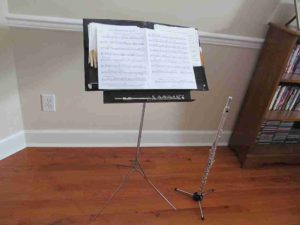I started this Web site in order to be able to write op-ed pieces and to share them with others. I used to submit such pieces in the form of letters or articles to the principal local newspaper in my area, the Knoxville News Sentinel, but I have come to feel that that avenue is largely closed off to me because of changes in the way the newspaper management views the opinions of ordinary people.
In 2008-2010 and again in 2013-2014, I was a “community columnist” for the Knoxville News Sentinel. A community columnist was someone from the community: not a journalist, not a member of the state or national legislature, etc. The other community columnists and I applied by submitting several sample columns to the News Sentinel and we were chosen on that basis by one of the editors. Over a period of a year or a year and a half, we submitted 8-12 columns for publication. We were not paid for our columns, which made it all the more of a jolt to be told when I applied for the later period that the newspaper owned the rights to our columns. (I was not told this during my first stint and I do not recall seeing or signing any document stating that.) So not only was the News Sentinel getting our columns for free, we did not own the copyright and would ourselves have to apply for reprint rights if we wanted to give somebody permission to reprint our material. Not wanting to be tied up for possibly months in requesting permission from the News Sentinel to publish my columns (and guessing that they have no further interest in them anyway), I have ignored their alleged ownership in posting my columns on this Web site. // After my second cohort finished our series of columns in 2014, the News Sentinel discontinued the community columnist program. Still, after that various of my op-ed pieces and letters to the editor were published in the News Sentinel; The Oak Ridger, the local paper for Oak Ridge, Tennessee, where I lived until late 2014; and in the now defunct The Oak Ridge Observer. To this day, people ask when my next column or letter is coming out.
Then the ownership of the News Sentinel changed. Eventually the management broke from cover to confirm what many readers suspected: as Joel Christopher, the “executive editor” of the News Sentinel, stated in the newspaper (“Opinion Pages: We Listen to Our Readers”, 2/17/19), op-eds were “typically reserved for experts and policymakers with direct and deep knowledge of a topic”. I was struck by that word “reserved”: as I told him in an E-mail message, this seemed to me to be not in the best interest of informing the public. I said, “People don’t want to read happy fluffy stories or canned political tripe, but stuff that makes them think and discuss. Also, the idea that only the elite need apply will not be well received by us alleged non-cognoscenti.”
I told him that the newspaper’s position reminded of the story told by the late great columnist Mike Royko about the idealistic young Chicago man who went to his local Democratic organization to volunteer to help out. The guy who answered the door of the office peered at him suspiciously and asked who sent him. He replied that nobody sent him, he just came. The guy said, “We don’t want nobody nobody sent!” and closed the door on him. So, I added, if Mr. Christopher was saying that “only pre-vetted, approved experts and policymakers – the elite, the In Crowd, the A-Listers, the Haves – are appropriate writers of op-ed columns”, then, I predicted, by this elimination of the casting of the wider personal net the newspaper would turn its readers off. This was especially true, I said, because to me many of the “expert/policymaker” op-ed columns the newspaper had taken to printing did not seem to represent the personal point of view of the writer but instead to be intended to serve some political or business interest; the content often seemed to be canned, as though the ostensible writer was actually just a front for his PR department or campaign staff. (In fact, I know a thoughtful, educated man who cancelled his subscription to the News Sentinel for that reason.)
Except for one brief letter, I had not sent any letter or op-ed column to the News Sentinel in a long time. That is because of an experience I had in 2017 following the shocking second trial of Raynella Dossett Leath for murdering her husband.
For those readers not familiar with her case, I digress to provide this summary. Raynella Large, a nurse, married Ed Dossett in 1970. When he became the Knox County, Tennessee district attorney, she became a local VIP. But after many years of marriage he was diagnosed with terminal cancer. In July 1992, he was so ill that, family friends observed, he could not walk and had to spend his time in bed or in a wheelchair. But somehow, according to Ms. Dossett, he made it out to the cattle corral on their farm, fell down or was knocked down by the cattle, and was trampled to death. His body was autopsied. The medical examiner, despite doubts about the death because there was a double indemnity insurance policy for accidental death, certified it as an accident. The ME did not wait for the toxicology report to come in before making this determination; when the report did come in, weeks later, it was apparently routinely filed. There were suspicions that this was because Ms. Dossett had important friends who spoke up for her. Years later, another medical examiner would note that the toxocology report showed that the level of morphine in Dossett’s system was too high to be consistent with life. As a nurse and his caregiver, Ms. Dossett would have been the prime suspect in his death.
About six months after Mr. Dossett’s death, Ms. Dossett became Ms. Leath by marrying David Leath, a barber and family friend who owned a nearby farm. In 1994, Ms. Leath’s son by Ed Dossett died in a car accident. Shortly thereafter, she was told that Mr. Dossett had fathered a son by another woman during their marriage. So for some bizarre reason – conjecture was that she somehow wanted to gain custody of that other son – Ms. Dossett Leath lured the woman’s husband to her farm. There she took out a gun and began to shoot at him. He ran, with her in pursuit, but eventually fell and twisted his ankle. She caught up with him and fired her gun at him again, but the gun jammed. She remarked to him ruefully that she used to be a better shot. He fled and reported the incident to the police. She ended up pleading guilty to aggravated assault (instead of the proper charge, attempted murder). She was sentenced to six years of probation — and her conviction was erased at the end of that period.
In 2003 her husband David Leath was found dead in his bed; she said it was suicide, but his daughter (by a previous marriage) disputed that. There were three shots fired from the gun, with the second being the one that killed him. The authorities dithered for three years, then finally gave the evidence to a grand jury, which indicted her for murder. A separate jury indicted her for the death of her first husband as well. But a judge in the Criminal Court at the time, Richard Baumgartner refused (three times!) to allow Mr. Dossett’s body to be exhumed.
In 2009 a jury deadlocked in her murder case for killing David Leath, but she was retried in 2010 before Judge Richard Baumgartner and convicted. She was sentenced to life, so the prosecutors dropped the Ed Dossett murder case. But subsequently, Judge Baumgartner was himself convicted of extensive drug use while hearing cases. At least one major case had to be retried, on the basis that he was so under the influence that he was not fit to have been on the bench. So Dossett Leath petitioned for and got a retrial. This was before Judge Paul Summers. She was convicted again – but then there was a twist that shocked many people. After more than 24 people went on record as believing the evidence against her (i.e., those voting for her conviction in the hung jury plus the 24 people in the juries in her two subsequent trials), she was set free by Judge Summers, who entirely discounted the second jury’s verdict and said he (personally) found the evidence lacking. Dossett Leath was set free.
I considered this to be so outrageous that I wrote an op-ed column about this and submitted it to the News Sentinel. I heard nothing back and meanwhile the News Sentinel did not publish a single letter or op-ed on this subject in the newspaper even though the News Sentinel had devoted a lot of space to the case. (There might have been something online, but I don’t read the stuff online because of all the popups.) So, because this was a matter that people were really interested in, I wrote a followup E-mail message to the News Sentinel, asking if my piece would be published. I received a brief, slapdash reply from one of their people:
“we are not publishing”
Yes, he failed to capitalize the sentence, he did not include a direct object, and he left the period off the end. This seemed to me very ignorant and beyond that, unprofessional. But it did seem to be of a piece with the new editorial policies in place: the News Sentinel was not interested in volunteered pieces, i.e., not interested in something nobody important sent.
In my E-mail message to Editor Christopher of the News Sentinel, I told him about the op-ed piece I submitted and how it was received by his person. As now seems typical of the News Sentinel, I received no reply from him.
The News Sentinel’s motto is “Give light and the people will find their own way”. That is so ironic considering that they don’t seem to want anything but pattycake input in the form of brief letters from the people, i.e., the public. Maybe they should change their motto to “Tell them what we deem it desirable for them to know” because they seem to want to control public opinion. Me, I have decided to go my own way. So here I am, blogging away.






Recent Comments